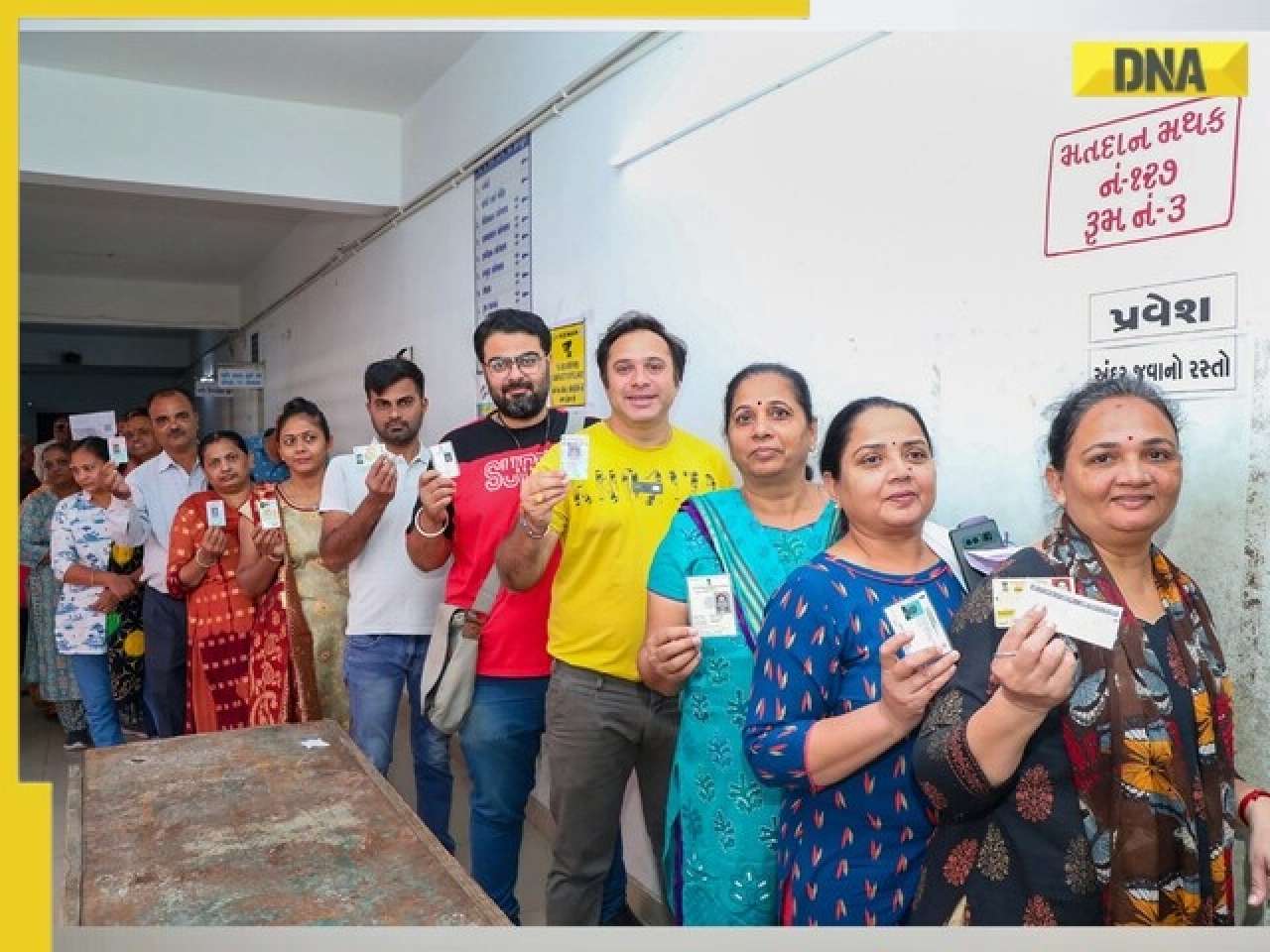There are more than 5,000 posts of judicial officers lying vacant in lower courts across the country, resulting in almost 3 crore pending cases. With no immediate solution in sight, it is a sad story for litigants. DNA brings you details
The adage goes as "denial of timely justice, amounts to denial of justice itself," – an easy solution to this is to make sure that there are sufficient number of judges and judicial officers to carry out court proceedings. Now, in the Indian context, that solution hints at filling up of gaping vacancies in the courts.
As per information shared in the Lok Sabha, in July, the sanctioned strength of judicial officers in subordinate courts is 2,097. Yet, until September 30, the number of vacancies in the same category in Maharashtra, was found to be 167.
As per the National Judicial Data Grid, on December 11, as many as 11,81,439 civil cases were pending in Maharashtra. However, a total of 23,75,896 criminal cases were pending in the subordinate courts. The pendency might not seem overwhelming but the fact that the ratio of the number of judges to that of cases in the country is dismal, leads to frequent adjournments. Also, the interim between two dates of hearing a case is significantly long.
The judge-population ratio is 19.49 per million or 10 lakh people in India. The Law Commission of India, in its 120th report recommended that the strength of judges per one million population should be increased from 10.5 to 50 judges. As compared to the United States of America, it is 107 judges per million people and again 51 per million people in the United Kingdom.
ALSO READ: It’s a law and older situation
Increasing the number of judges underlines the need for additional infrastructure.
Advocate Ahmed Abdi, who has filed a petition in the Bombay High Court, seeking a new and improved court complex for the High Court in the suburbs of the city, which could easily accommodate the judges and litigants said, "Surely, the pendency of cases will reduce if the vacancies are filled up. But, what about the infrastructure? Is it not the government's responsibility to provide the same? The condition of subordinate courts and quasi-judicial bodies in the city and also in other districts of Maharashtra is deplorable. This, eventually, demoralises judicial officers, who feel neglected."
Arrears Committees
In pursuance of the resolution passed in the Chief Justices' Conference held in April 2015, all the High Courts have set up Arrears Committees to take necessary steps for dealing with backlog. The Arrears Committees have chalked out action plans to reduce pendencies in their respective jurisdictions. At the district level, the district judge holds monthly meets for all judicial officers to monitor the progress made in hearing pending cases.
ALSO READ: Competence, collective effort, and ways to unburden lower courts: Experts
An official of the Bombay High Court said, "Recently, while hearing a suo-motu petition, the Supreme Court said that the situation in Maharashtra with regard to vacancies for judicial officers in subordinate courts, is not critical. The filling up of judiciary posts is an annual administrative procedure which is followed without fail. The procedure of recruitment started on April 1 and accordingly, 192 judicial officers have been promoted at every step of the lower judiciary. The fresh vacant posts created will be filled up in the annual recruitment procedure which is to be held in 2019."
The officer also cited that it is not possible to increase the number of judicial officers keeping pace with the number of complaints filed every day, as there is an infrastructure crunch.
ALSO READ: A year in life of a judge: Camps, meetings & remand duties
"In a city like Mumbai, it is difficult to find space to construct extra court buildings and courtrooms. Also, even if it is given a thought, the buildings cannot be raised in a day's time. Therefore, we cannot practically seek an increase in the number of judges. The only solution is to set up a Lok Adalat. We already do that regularly. The latest one was held on December 8. It solved at least a lakh cases and helped in lowering the burden of pendency," the official said.
Senior Advocate Rajiv Chavan said, "The lower judiciary is more structured than the High Court and the Supreme Court. Recruitment in the lower courts is a continuous process and is done through a process of examination and personal interviews. In fact, it has been noticed that the process helps more number of women advocates to become magistrates."

A SLUGGISH PROGRESS
- As per data shared in the LS, in July, the sanctioned strength of judicial officers in lower courts was 2,097
- Yet, until Sept 30, the no. of vacancies for judges in Maha, was found to be 167
- As per the National Judicial Data Grid, on December 11, as many as 11,81,439 civil cases were pending in Maharashtra
![submenu-img]() Darshan breaks down after his mother, brother meet him in jail for the first time since his arrest in murder case
Darshan breaks down after his mother, brother meet him in jail for the first time since his arrest in murder case![submenu-img]() India lift the ICC Trophy after 11 years; wishes from Amitabh Bachchan, Rachana & Rhythm, Indra Nooyi flow in!
India lift the ICC Trophy after 11 years; wishes from Amitabh Bachchan, Rachana & Rhythm, Indra Nooyi flow in!![submenu-img]() 'He is entitled to...': US Supreme Court says Donald Trump partially immune from prosecution for...
'He is entitled to...': US Supreme Court says Donald Trump partially immune from prosecution for...![submenu-img]() Jackky Bhagnani reveals Akshay Kumar has put his fee for Bade Miyan Chote Miyan on hold until...
Jackky Bhagnani reveals Akshay Kumar has put his fee for Bade Miyan Chote Miyan on hold until...![submenu-img]() 'Auto drivers would take me to...': Industry actor Samarth Shandilya recalls initial challenges in Mumbai | Exclusive
'Auto drivers would take me to...': Industry actor Samarth Shandilya recalls initial challenges in Mumbai | Exclusive![submenu-img]() UPSC Prelims Result 2024 declared at upsc.gov.in; get direct link here
UPSC Prelims Result 2024 declared at upsc.gov.in; get direct link here![submenu-img]() Meet woman who studied six hours daily, cracked UPSC exam at 23 to become IAS officer, currently posted at...
Meet woman who studied six hours daily, cracked UPSC exam at 23 to become IAS officer, currently posted at...![submenu-img]() Meet man, hired for record-breaking package, not from IIT, IIM, his salary is...
Meet man, hired for record-breaking package, not from IIT, IIM, his salary is...![submenu-img]() Meet Kathak dancer who topped UPSC exam in 1st attempt, worked at RBI in day and studied at night, she is...
Meet Kathak dancer who topped UPSC exam in 1st attempt, worked at RBI in day and studied at night, she is...![submenu-img]() Meet woman who cleared UPSC exam at 23 in her first attempt, got AIR 94, but didn't become IAS officer due to...
Meet woman who cleared UPSC exam at 23 in her first attempt, got AIR 94, but didn't become IAS officer due to...![submenu-img]() DNA Verified: Did Kangana Ranaut party with gangster Abu Salem? Actress reveals who's with her in viral photo
DNA Verified: Did Kangana Ranaut party with gangster Abu Salem? Actress reveals who's with her in viral photo![submenu-img]() DNA Verified: New Delhi Railway Station to be closed for 4 years? Know the truth here
DNA Verified: New Delhi Railway Station to be closed for 4 years? Know the truth here![submenu-img]() DNA Verified: Did RSS chief Mohan Bhagwat praise Congress during Lok Sabha Elections 2024? Know the truth here
DNA Verified: Did RSS chief Mohan Bhagwat praise Congress during Lok Sabha Elections 2024? Know the truth here![submenu-img]() DNA Verified: Is CAA an anti-Muslim law? Centre terms news report as 'misleading'
DNA Verified: Is CAA an anti-Muslim law? Centre terms news report as 'misleading'![submenu-img]() DNA Verified: Lok Sabha Elections 2024 to be held on April 19? Know truth behind viral message
DNA Verified: Lok Sabha Elections 2024 to be held on April 19? Know truth behind viral message![submenu-img]() In pics: India beat South Africa by 7 runs to lift second T20 World Cup title
In pics: India beat South Africa by 7 runs to lift second T20 World Cup title![submenu-img]() Alia Bhatt mesmerises in gown, Ranbir Kapoor looks classy in tuxedo in latest romantic photos, fans say 'couple goals'
Alia Bhatt mesmerises in gown, Ranbir Kapoor looks classy in tuxedo in latest romantic photos, fans say 'couple goals'![submenu-img]() Newlyweds Sonakshi Sinha-Zaheer Iqbal pose candidly with paps; Anil Kapoor, Kajol, Huma Qureshi attend wedding reception
Newlyweds Sonakshi Sinha-Zaheer Iqbal pose candidly with paps; Anil Kapoor, Kajol, Huma Qureshi attend wedding reception![submenu-img]() Meet Lovekesh Kataria: Elvish Yadav's close friend, Bigg Boss OTT 3 contestant who lied to father, spent his fees on...
Meet Lovekesh Kataria: Elvish Yadav's close friend, Bigg Boss OTT 3 contestant who lied to father, spent his fees on...![submenu-img]() From Highway to Chandu Champion: 5 underrated gems from Sajid Nadiadwala
From Highway to Chandu Champion: 5 underrated gems from Sajid Nadiadwala![submenu-img]() Lok Sabha Speaker's Election: What does the Constitution say?
Lok Sabha Speaker's Election: What does the Constitution say?![submenu-img]() Explained: Why is Kerala demanding to change its name to Keralam?
Explained: Why is Kerala demanding to change its name to Keralam?![submenu-img]() DNA Explainer: What is Kafala system that is prevalent in gulf countries? Why is it considered extremely brutal?
DNA Explainer: What is Kafala system that is prevalent in gulf countries? Why is it considered extremely brutal? ![submenu-img]() Lok Sabha Elections 2024: What are exit polls? When and how are they conducted?
Lok Sabha Elections 2024: What are exit polls? When and how are they conducted?![submenu-img]() DNA Explainer: Why was Iranian president Ebrahim Raisi seen as possible successor to Ayatollah Khamenei?
DNA Explainer: Why was Iranian president Ebrahim Raisi seen as possible successor to Ayatollah Khamenei?![submenu-img]() Darshan breaks down after his mother, brother meet him in jail for the first time since his arrest in murder case
Darshan breaks down after his mother, brother meet him in jail for the first time since his arrest in murder case![submenu-img]() Jackky Bhagnani reveals Akshay Kumar has put his fee for Bade Miyan Chote Miyan on hold until...
Jackky Bhagnani reveals Akshay Kumar has put his fee for Bade Miyan Chote Miyan on hold until...![submenu-img]() 'Auto drivers would take me to...': Industry actor Samarth Shandilya recalls initial challenges in Mumbai | Exclusive
'Auto drivers would take me to...': Industry actor Samarth Shandilya recalls initial challenges in Mumbai | Exclusive![submenu-img]() The Buckingham Murders: Kareena Kapoor is held forcibly by cops in first look poster, fans say 'National Award loading'
The Buckingham Murders: Kareena Kapoor is held forcibly by cops in first look poster, fans say 'National Award loading'![submenu-img]() Dharmendra bought this film's script for Rs 17500, his sister forced him to not work in it, movie changed life of...
Dharmendra bought this film's script for Rs 17500, his sister forced him to not work in it, movie changed life of...![submenu-img]() Watch viral video: AI chatbot caught lying, tells users that it is...
Watch viral video: AI chatbot caught lying, tells users that it is...![submenu-img]() Virat Kohli fails to make it in ICC ‘Team of the Tournament', six Indians in the list including…
Virat Kohli fails to make it in ICC ‘Team of the Tournament', six Indians in the list including…![submenu-img]() Meet woman who lives in India's largest house, larger than Mukesh Ambani, Nita Ambani's Rs 15000 cr Antilia, she is...
Meet woman who lives in India's largest house, larger than Mukesh Ambani, Nita Ambani's Rs 15000 cr Antilia, she is...![submenu-img]() North Korea publicly executes 22-year-old man for listening to...
North Korea publicly executes 22-year-old man for listening to...![submenu-img]() Viral video: Little girl’s adorable dance to ‘Soulmate’ wins internet, watch
Viral video: Little girl’s adorable dance to ‘Soulmate’ wins internet, watch






































)










)




)
)
)
)
)
)